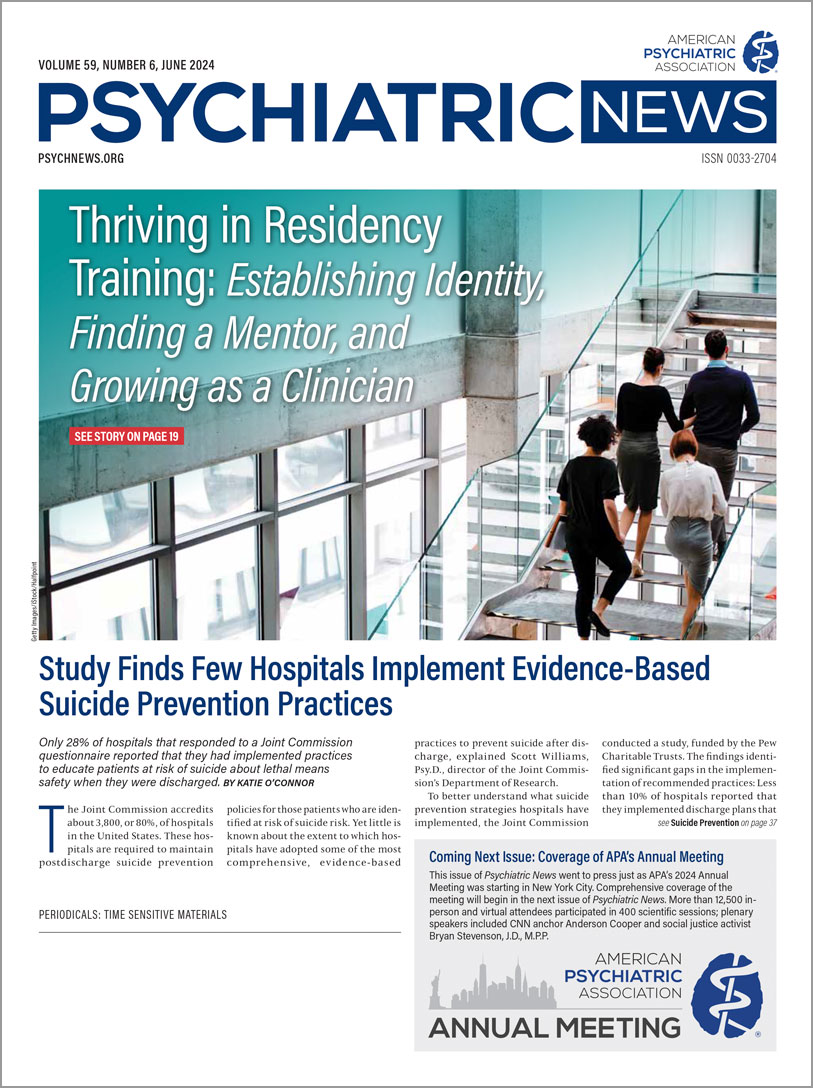Body dysmorphic disorder (BDD) affects almost 2 in every 100 teens, according to a
report in the
Journal of the American Academy of Child and Adolescent Psychiatry (JAACAP).
Moreover, children and adolescents with BDD are highly likely to have other psychiatric disorders—especially depression and anxiety disorders—and to experience psychosocial problems, self-harm, and/or suicide attempts.
“Since young people with BDD tend not to spontaneously disclose their symptoms unless directly asked, it is crucial that clinicians utilize BDD screening tools and ask young people directly about appearance concerns,” wrote lead author Georgina Krebs, Ph.D., D.Clin.Psy., associate professor in young person’s mental health and cognitive behavioral therapy at University College London, and colleagues.
According to DSM-5, BDD is characterized by the following diagnostic criteria:
•
Preoccupation with one or more perceived defects or flaws in physical appearance that are not observable or appear slight to others; the preoccupation is not better explained by concerns with body fat or weight in an individual whose symptoms meet criteria for an eating disorder.
•
Repetitive behaviors such as mirror checking, excessive grooming, skin picking, seeking reassurance, or mentally comparing appearance to others.
•
Clinically significant distress or impairment in social, occupational, or other important areas of functioning caused by the preoccupation with appearance.
In the JAACAP study, Krebs and colleagues analyzed data on 7,654 children and young people aged 5 to 19 who completed the 2017 Mental Health of Children and Young People in England survey with their parents/guardians. BDD was assessed using the Developmental and Well-Being Assessment, a standardized screening tool that includes a question on whether the child is concerned with how he/she looks. Children who answered “A little” or “A lot” were presented with a series of other questions related to the DSM-5 diagnostic criteria for BDD.
The point prevalence of BDD among the study participants was 1.0%. BDD was more common among teens aged 12 to 19 (1.9%) than among children aged 5 to 11 (0.1%). Across all ages, BDD was also more common in girls (1.8%) than in boys (0.3%).
Nearly 70% of young people with BDD met diagnostic criteria for at least one additional psychiatric disorder. The most common comorbidities were anxiety-related disorders and depressive disorders, occurring in 58.7% and 31.7% of those with BDD, respectively.
Further, 46% of young people with BDD reported a lifetime history of self-harm or suicide attempts, compared with 8% of those without BDD. Teens with BDD also reported higher levels of psychosocial impairment and health care utilization.
Excessive preoccupation with appearance that fell short of meeting diagnostic criteria for BDD was also common among teens and showed similar patterns of comorbidity and impairment.
Katharine A. Phillips, M.D., a professor of psychiatry at New York Presbyterian and Weill Cornell Medicine, who reviewed the report for Psychiatric News, said it underscores that BDD is not rare and can be profoundly impairing. The random probability sampling and inclusion of questions about subclinical appearance preoccupation are strengths of the study; a weakness is that the survey conflated self-harm and suicide attempts, Phillips said.
“Suicidality is a serious clinical concern in young people with BDD,” she said, as is dropping out of school. A 2006
study in
Psychiatric Research by Phillips and colleagues found that among 36 adolescents with BDD, 94.3% reported moderate, severe, or extreme distress due to BDD; 80.6% had a history of suicidal ideation; and 44.4% had attempted suicide.
She added, “A lot of people, including youth, seek cosmetic treatment for BDD, even though they appear normal to others. It makes sense that cosmetic treatment isn’t going to change anything—people with the disorder actually have aberrations in visual processing; they aren’t seeing what we see. Cosmetic remedies should be discouraged.”
Phillips said treatments with selective serotonin reuptake inhibitors and/or cognitive-behavioral therapy tailored to adolescents with BDD can be highly effective. “It’s such a developmentally important time, and BDD often interferes with healthy peer relationships, development of romantic relationships, and academic success,” she said. “But the right treatment improves symptoms and can help young people get back to school and sports and other activities they might have stopped, rebuild relationships, and improve their quality of life.” ■

